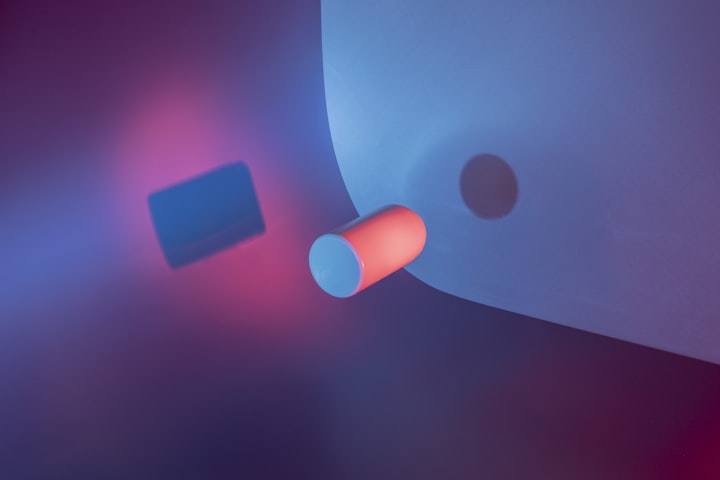Science meets Mothers and Daughters
Mothers and daughters have identical anatomy in the part of the brain that governs emotions

“God couldn’t be everywhere so that is why he invented mothers.” — Daphne Wilder
The mother-infant bond is defined as an affective state of the mother including maternal emotions towards the infant, and is considered to be the basis for the child’s later attachment and sense of self.
This bond is a characteristic of virtually all mammals, and scientists believe that the neural mechanisms that promote mother-infant bonding have been modified by natural selection to establish also the capacity to develop a selective bond with a mate during the evolution of monogamous mating strategies.
But these neural systems regulating maternal responsiveness may not only serve as a foundation for pair bonds, but also for other strong social bonds that form in human societies, such as cooperation and altruism, that play important roles in fostering social cohesion.
From studies in rats, sheep and voles (Neural mechanisms of mother-infant bonding and pair bonding: Similarities, differences, and broader implications) we know that these neural systems consist of:
- the amygdala — two almond-shaped clusters of cells near the base of the brain — where emotions are given meaning, remembered and attached to associations and responses (emotional memories),
- the nucleus accumbens-ventral pallidum (NA-VP), where the ventral palladium (within the basal ganglia of the brain) is a major mechanism of reward in the brain, while the nucleus accumbent (a region in the basal forebrain) it is thought to be directly involved in reinforcing and addictive behaviours in response to drug use. And
- the action of dopamine (DA) — hormone and neurotransmitter — and oxytocin (OT) — hormone sometimes known as the love hormone — within NA that appears to promote the synaptic plasticity that allows infant’s (or mating partner’s) stimuli to persistently activate the NA-VP system, leading to an enduring social attraction and bonding. Moreover, OT is responsible for the connection between the olfactory bulbs and the amygdala, that play also a role in the selective recognition processes that occur during maternal bonding in certain species and during pair bond formation.
We can generally say that the development of a mother-infant bond consists of a two-step process:
- a recognition process and
- a persistent attraction process.
During the recognition process a baby sends “stimuli” to the mother’s brain in order for the baby’s stimuli (crying, smiling etc) to gain access to the neural mechanisms just mentioned, promoting in this way attraction and maternal care rather than rejection and avoidance.
Afterwards, the persistent attraction process — formed between the baby and the mother — is the result of brain plasticity mechanisms that cause an enduring or long- lasting attraction to develop between a mother and her infant.
For example, in the weeks and months after giving birth the amygdala of a mother starts to grow and this is correlated with how a new mother behaves, since an enhanced amygdala makes a mother hypersensitive to her baby’s needs, while a cocktail of hormones (like OT) can find more receptors in a larger amygdala, creating in this a way a positive feedback loop to motivate mothering behaviours.
Gray matter — a major component of the central nervous system consisting of neuronal cell bodies, dendrites and unmyelinated axons, glial cells (astrocytes and oligodendrocytes), synapses and capillaries — becomes also more concentrated after giving birth, and activity increases in the regions of the mother’s brain that control empathy, anxiety and social interactions. In other words, those maternal feelings of overwhelming love, fierce protectiveness and constant worry begin as reactions in the brain.
In particular, maternal OT levels — the system responsible for maternal-infant bonding across all mammalian species — dramatically increase during pregnancy and the postpartum period. And more the mother is involved in child care, the greater the increase in OT. We know also that intranasal OT leads to increased parental synchrony and engagement with the child, which in turn increases salivary OT in the child. Intranasal OT also decreases aversive responses from infant stimuli (crying) and increases activation of the reward systems. Finally, with respect to pair bonding, intranasal OT given in men in romantic relationships causes the men to rate their partner, but not other females, as being more attractive.
But before you start spaying yourself, your baby or your mate with OT remember that OT has serious side effects (slow heart rate, fast heart rate, irregular heartbeats, permanent central nervous system or brain damage, death secondary to suffocation, neonatal seizure, fetal death and many more), and most importanlty OT has also a dark side.
Meaning, that before you sniff of the hormone OT you need to know that new research suggests that OT may also enhance negative social cues, indicating that OT rises not only in women who are in good, affectionate relationships, but also in women who have distressed relationships.
Moreover, OT was shown also to have different effects among different cultures, probably because different versions of the same genes can be found between for example Americans and Koreans.
In fact, Heejung Kim from the University of California found that when Americans carry a particular version of the OXTR gene (the oxytocin receptor) are more likely to turn to their friends for support when they are distressed, while distressed Koreans who carry the same version of OXTR are less likely to seek support from their friends.
But let’s go back to OT now during the mother-infant bonding.
The OT and the other neural systems described here have been implicated also in a wide range of human social cognition, emotion and behaviour, including empathy, trust, cooperation and altruism, that may well have evolutionary roots in their roles in regulating maternal responsiveness.
As an example, the anterior insular cortex — a portion of the cerebral cortex believed to be involved in consciousness — is a prominent part of the neural circuitry underlying empathic feeling states in humans. We know that the insular cortex has direct and indirect neural connections with the amygdala, the prefrontal cortex, NA and the hypothalamus — a small region located at the base of the brain, playing a crucial role in releasing hormones and regulating body temperature — allowing probably in this way empathic emotions to promote aid-giving responses not only to one’s offspring or spouse, but also to other individuals in larger social group.
But while mother-infant bond is very strong, there is something about the mother-daughter bond that probably transcends time and space like no other bond.

In fact, we know now for sure — according to as study published in the Journal of Neuroscience (Female-Specific Intergenerational Transmission Patterns of the Human Corticolimbic Circuitry) — that it is the mother-daughter relationship to be the strongest of all parent-child bonds (or other social bonds), indicating that the empathy departments between a mother and a daughter have a very “special connection”.
“A mother and a daughter always share a special bond, which is engraved on their hearts.” — Unknown
The reason why the mother-daughter relationships are the strongest of all parent-child bonds is connected to the common ways their brains process emotion.
In general, parents have large genetic and environmental influences on offspring’s cognition, behaviour and brain, and these intergenerational effects — intergenerational is something where multiple generations of people intermingle or come together — are observed for example in mood disorders, with particularly robust association in depression between mothers and daughters.
We don’t really know a lot about the neural mechanisms behind these intergenerational effects in humans (but keep in mind that epigenetic mechanisms have been favored over genetic explanations of intergenerational effects).
But we do know that the corticolimbic circuitry is highly relevant in a wide range of processes, including mood regulation and depression, therefore it has been suggested that the corticolimbic circuitry may also show matrilineal transmission patterns.
But what is the corticolimbic circuit?
Well, the corticolimbic circuit is the center involved in processing and regulating responses to emotional stimuli, and the amygdala and the ventral prefrontal cortex are the two major nodes of this circuit.
We know that the amygdala is the neural system regulating maternal responsiveness, pair bonds and also other strong social bonds such as cooperation and altruism. We know also that the prefrontal cortex — covering the front part of the frontal lobe — is the brain region that has been implicated in planning complex cognitive behaviour, personality expression, decision making, and moderating social behaviour. Moreover, both amygdala, prefrontal cortex, NA and hypothalamus have direct and indirect neural connections with the anterior insular cortex — a portion of the cerebral cortex believed to be involved in consciousness.
To put it in other words, when it comes to mother-infant bonding, empathy, corticolimbic circuitry, social bonds, feelings, mood, depression, consciousness and intergenerational effects we always find connections between the neural centres involved, but in the case of a mother-daughter bond we can actually find a “special connection” very strong in the empathy departments.
In particular, when 35 healthy families — consisting of parents and their biological offspring — had their gray matter volume investigated they found positive associations of regional gray matter volume in the corticolimbic circuit — including the amygdala, hippocampus, anterior cingulate cortex and ventromedial prefrontal cortex — between biological mothers and daughters.
Surprisingly, this association was significantly greater than mother–son, father– daughter, and father–son associations, suggesting that the corticolimbic circuitry — which is implicated in mood regulation — shows a matrilineal- specific transmission patterns.
So far, a growing number of animal and human neuroimaging studies have implicated the corticolimbic circuitry as the biological substrate of emotion regulation and dysfunctions in this circuitry are associated strongly with conditions such as mood and anxiety disorders. In addition, a smaller hippocampal volume — hypocampus is one of the key components of emotional regulatory networks in the brain — in previous studies has been reported to be associated with depression.
Therefore, next time you feel sad or depressed and your mother just knows it (or vice versa), is because mother’s and daughter’s corticolimbic morphology (the center for processing and regulating responses to emotional stimuli) is very similar.
This finding, apart providing a novel neurobiological support for female-specific transmission patterns in mood disorders, paves the way for additional research for these matrilineal associations and how they can be tightly linked to greater vulnerability for daughters (but not sons) in developing depression when their mothers have depression.
In any case, several limitations of this study should be noted, because they only used genetically related families, in which genetic, prenatal and postnatal environments are shared and did not include in vitro fertilization and adoptive families. And they only focused on matrilineal transmission patterns in the human brain.
In summary, this was the first study to investigate intergenerational transmission patterns in the human brain using neuroimaging performing MRI scans on 35 healthy families, and demonstrating a significant matrilineal association between mothers and their female offspring in a brain circuit associated with emotion regulation, indicating mothers and daughters have similar anatomy when it comes to the part of the brain that regulates emotions.
Of course there is more to the mother infant bond that for now traditional (or classical) science can’t really explain, and probably only in a near future when quantum biology would have evolved enough we will probably have a better understanding of why some bonds do actually — in every sense of the word — transcend space and time, connecting people regardless of space and time.
And even if we can’t understand it yet, maybe we should just accept that love transcends the dimensions of time and space, with empathy just being probably the primer driver of this supernatural and metaphysical connection.
After all if your daughter (or mother) lives on a different continent, for some reason being a mother (or a daughter) means that you know exactly the moment her sadness begins.
Thank you for reading 👓💙
And if you liked this post why not share it?
#science #health






Comments
There are no comments for this story
Be the first to respond and start the conversation.